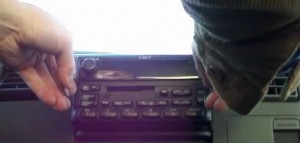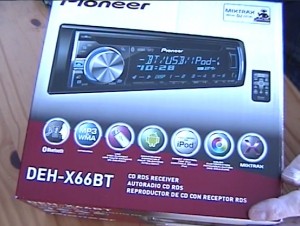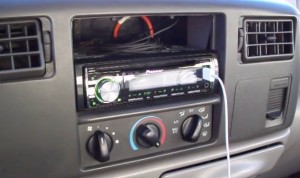Here is the original blog post over at Lumberjocks.com
Loft Bed 1
My kids are getting bigger and they need more floor space in their rooms. We’ve decided loft beds might be the way to go. Get the beds up in the air, create some desk space under the bed, and free up some of the rest of the floor space.
I’m in the early design / concept phase right now. Some of my criteria include:
– fits a standard single bed mattress
– strong enough to hold a full size man, say 200+ lbs
– robust joinery, kids / teenagers can be tough on furniture
– knock down joinery, if they ever leave for college they might want to take them with them, and if they don’t want to take them I’ll want to be able to break them down for storage.
It will be a fairly standard loft bed, bed on the top, desk space underneath. Function over form. Not a lot of fancy rails or balusters. Easy to get into and out of.
My first thoughts are a simple frame, rails across the back and ends.
*Simplified Frame Outline with just the side rails and posts*

I want to avoid gluing the rails to the posts. I want the entire bed to be able to be broken down in to a bundle of sticks.
I want the joints to be strong but able to be tightened if they loosen through use. This eliminates nails, screws, and lag bolts in my mind. Carriage or through bolts would likely work ok.
It needs to be reasonably easy to disassemble. Simple tools and not a lot of complex joints.
Think of something you could have broken down and put in the back of a covered wagon, hauled across the country, set back up when you got to California using only simple tools, and had it last for at least 3 generations.
The above requirements lead me toward some kind of a wedged joint. Something that will tighten up when the wedges are driven home, that can be further tightened by seating the wedges more, and can be disassembled by driving the wedges out of the joint. It also needs to be strong in use.
I considered a wedge pinned mortise and tenon. Basically a large mortise and tenon with a wedge shaped side pin through the tenon. I think it would work but I don’t care for the looks of the through wedge.

Another thought is a wedged through tenon. Extend the tenon through the end of the mortise and put the wedge outside of the tenon. Again suffers from aesthetics. (drive a wedge in the hole in the rail)

The direction I’m leaning toward is a *Wedged Half Dovetail*. The joint is pretty simple, it should lock pretty tight, it can be tightened by driving the wedge in, it can be disassembled by knocking the wedges out.


I drew the picture with the top and bottom of the mortise with sides at 7 degrees. Looking at it I think 7 degrees is probably ok for the half tail but is probably too steep for the top wedge.
I need the top wedge to lock when driven in. I’m thinking maybe 3 degrees might be a better angle. I’ll play with some concepts and probably prototype up some and see how they fare.
And I figure if things to too far wrong I can always drill a hole and pin them tight with a cross through carriage bolt through the tenon.

I’m open to other ideas. What else have you tried? No glue, locks tight, can be further tightened, knocks down easily, strong enough to last multiple generations.









































